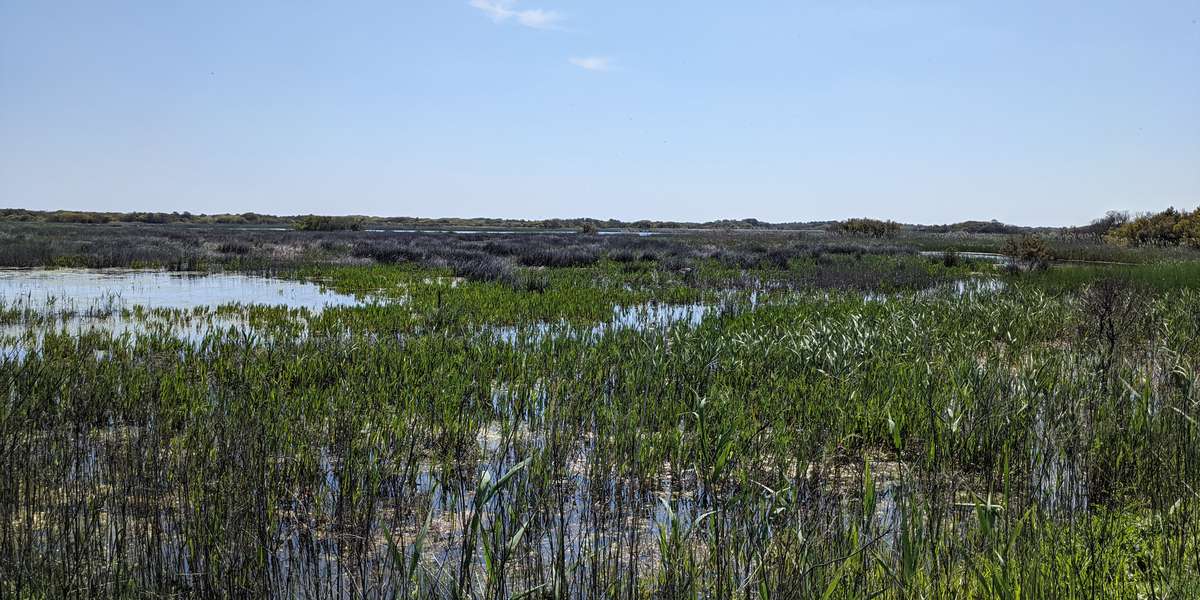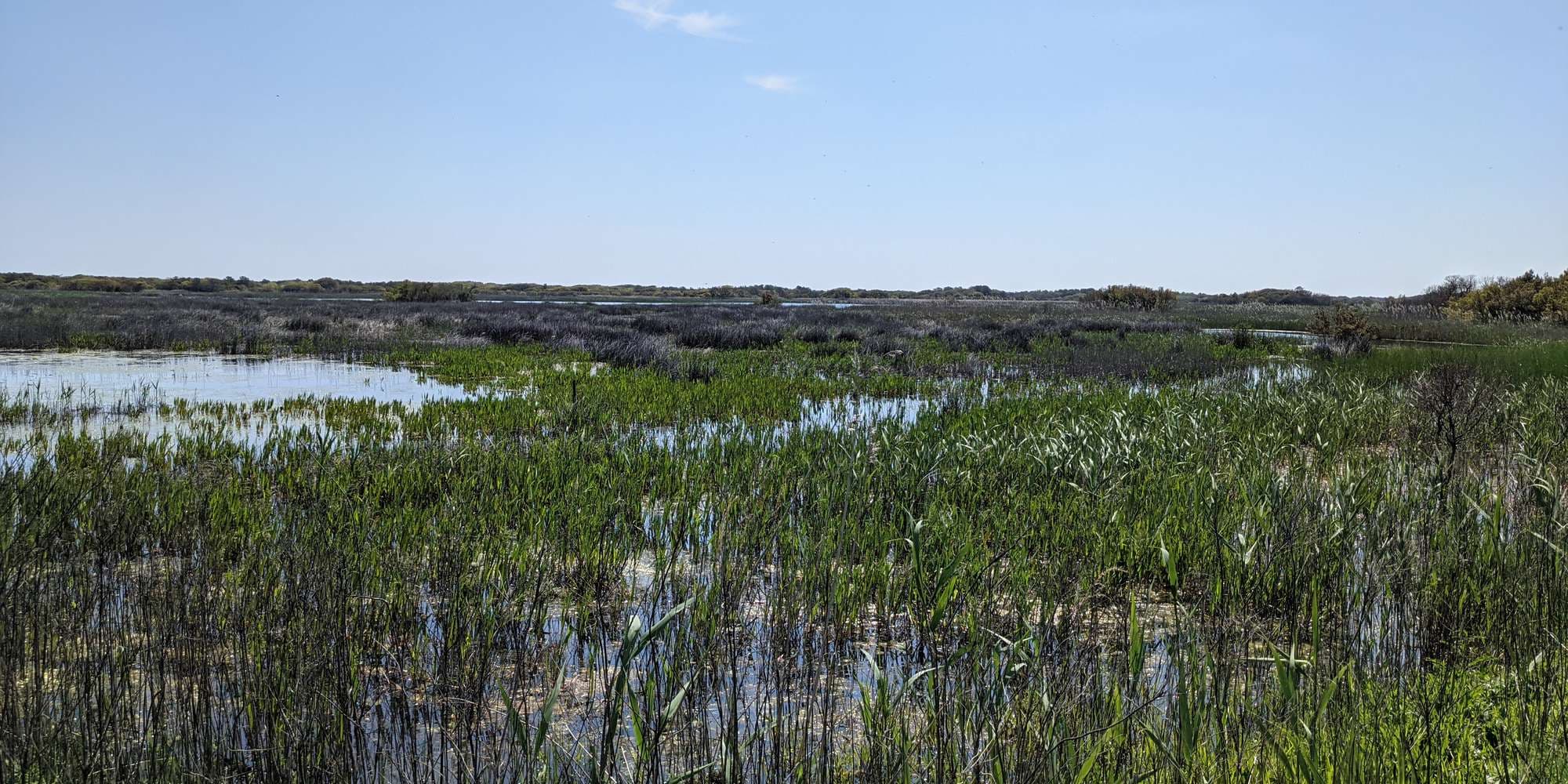2022
2023
2024
2025



2022
2023
2024
2025
Impoundment Complex
Managed by Back Bay National Wildlife Refuge
Since 2021
In Virginia, US
BKB104
This chronolog combines 104 photos from 16 contributors. Learn more
About this site
Back Bay National Wildlife Refuge manages a series of freshwater water pools, called impoundments, to benefit migratory birds. The Refuge was established in 1938 to protect and provide habitat for wintering waterfowl and other migratory birds and continues that mission today. Water levels in the impoundments are raised and lowered throughout the year to achieve the best habitat possible for the migratory species visiting at the time. During the winter water levels are raised high for waterfowl (ducks, geese and swans) who dive and dabble in search of food. In the spring and summer water levels are dropped. Lower water levels provide ideal habitat for shorebirds and also promote germination of the seeds that will become the food for the next winter's migratory waterfowl. This Chronolog site is in a closed area. Refuge staff and volunteers add photos to this time lapse to share the management of the area with visitors. Please respect all signs and gates while visiting the Refuge. Thank you!
About Back Bay National Wildlife Refuge
Back Bay National Wildlife Refuge is located in the southeastern corner of the City of Virginia Beach. The refuge was established in 1938 to protect and provide habitat for migrating and wintering waterfowl. Diverse habitats, including beachfront, freshwater marsh, dunes, shrub-scrub and upland forest are home to hundreds of species of birds, reptiles, amphibians, mammals and fish. Back Bay National Wildlife Refuge encompasses over 9,200 acres of beach, dunes, shrub-scrub, freshwater wetlands and woodlands. The main part of the wildlife refuge sits a thin strip of barrier island coastline typical of the Atlantic and Gulf coasts. Other areas of the refuge include islands in Back Bay and upland areas on the west bank of the bay. The refuge was established for migratory birds, particularly waterfowl, or ducks, geese and swans. Thousands of tundra swans, snow and Canada geese and a large variety of ducks visit the refuge during the fall/winter migration. Refuge waterfowl populations usually peak during December and January. The refuge also provides habitat for other wildlife, including such threatened and endangered species as the loggerhead sea turtle, and recently recovered species like the brown pelican and bald eagle. In addition to providing habitat for migratory birds and wildlife, Back Bay NWR provides over eight miles of scenic trails, a Visitor Center, interpretive programming and, with advance scheduling, environmental education opportunities. Popular outdoor recreation activities at the refuge include hiking, biking, freshwater fishing, surf fishing, kayaking/canoeing, wildlife photography and wildlife observation. Refuge grounds are open daily sunrise to sunset.
For nature-lovers
Explore chronologs
For organizations
Chronolog is a monitoring tool for parks, nature centers, wildlife organizations, schools, and museums worldwide. With over 100,000 contributors across 300 organizations, Chronolog is on a mission to engage communities with nature while recording important natural changes.
© Chronolog 2025 | Terms